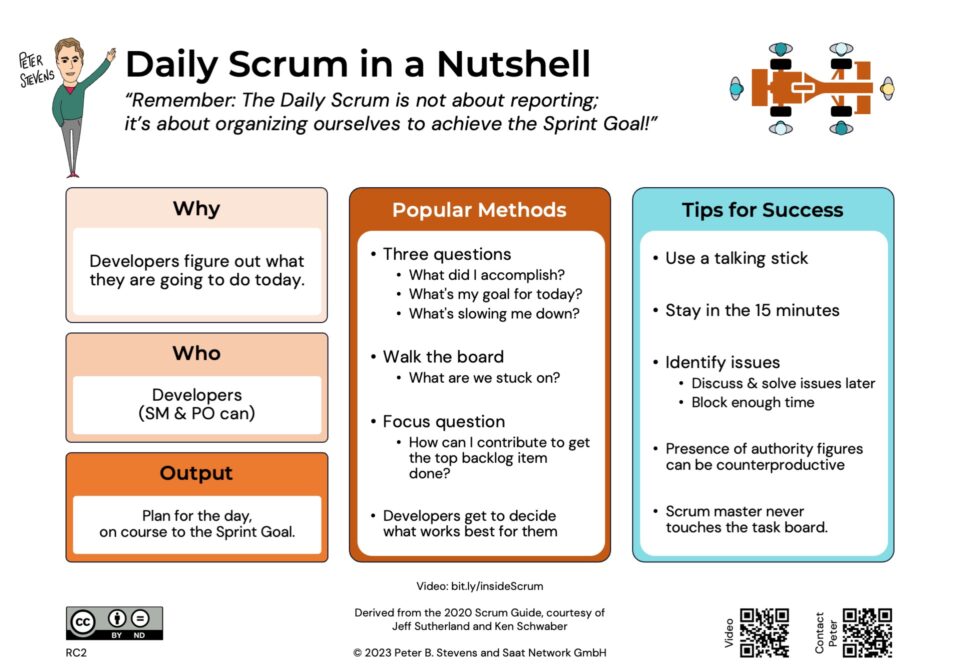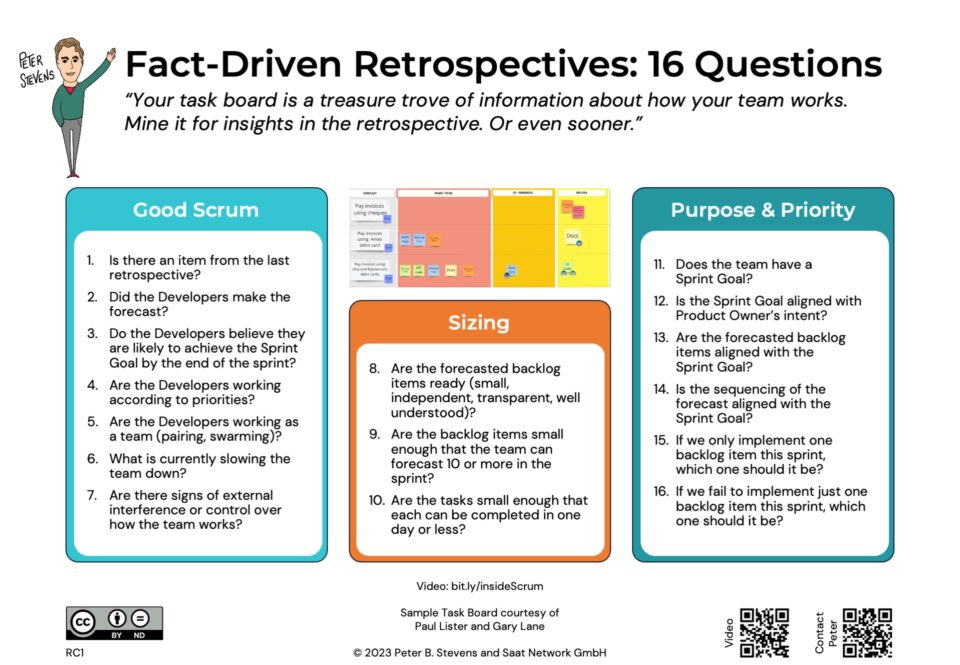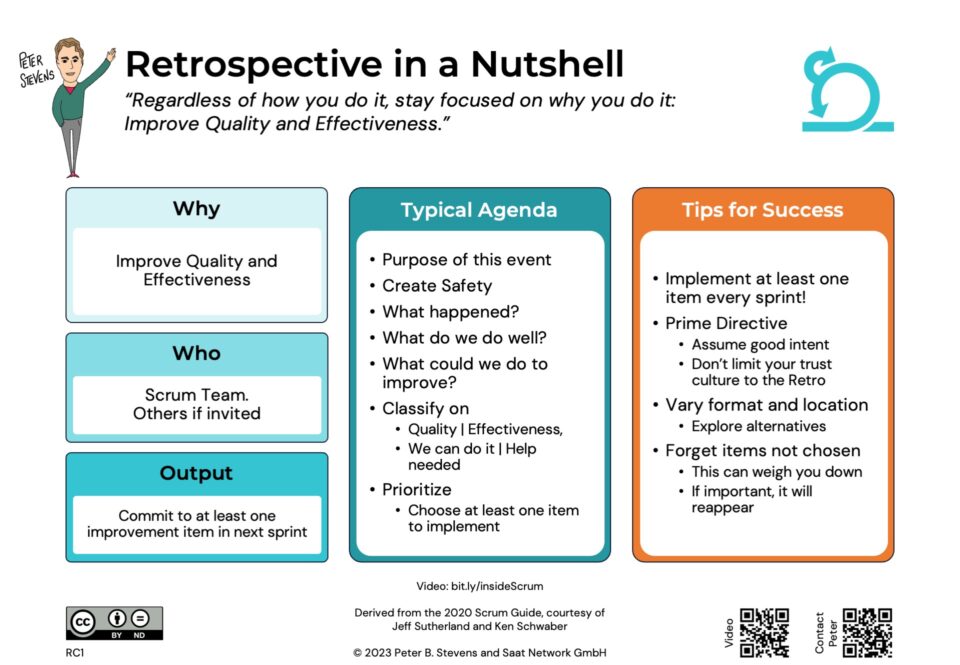Tackle your organization impediments with 59 minute sprints!
24-09-2014Why are you doing Scrum?
19-12-2014Pearl Zhu just posted an interesting question on the Stoos linkedin group. “What is the agile way to adopt agile?” Her answer did not resonate much with me, so I’d like to share how I start a company down the agile path.
Agile is about people, both the people doing the work (“People and Interactions over Process and Tools”) and the beneficiaries of the work (“Our highest priority is to satisfy the customer through early and continuous delivery….”). I believe people’s own experience makes the most convincing arguments.
So I start by asking the people involved what has worked for them in the past. I ask them to remember their best projects and share the stories of those projects with other people in the room. (See Remembering Heaven for a description of how I do it). After hearing everyone’s best projects and identifying the most promising role models for moving forward, we reflect on the patterns that made those projects successful.
Most people are not currently working on their best project ever. In fact, usually only about 10% of the people in the room are currently working on a great project. Very often no one at all is currently working on their best project ever. (I have seen numbers as high as 50%, but the difference between 10% and the higher score has always been a group doing Scrum!)
Would you like to be working now on your best project ever? Most people would! Could you agree to implement the patterns which made your best projects so awesome? Most people are willing to do that.
Wait! What exactly have we agreed to? Well at this point, I start to introduce Scrum (my favorite place to start), not as a set a of roles and processes, but rather as a small set of patterns. These patterns are easy to recognize in people’s own successful projects. What patterns do we find?
- Deliver something that works regularly
- Inspect and Adapt regularly
- A small interdisciplinary team solves the problem
- Once voice speaks for the customer / user / stakeholders
- Management guides and helps, and knows when to stay out of the way
- High performance is achieved through continuous improvement
So now agreeing to do Scrum is quite easy, and we can start without any significant resistance. Why? People recognize Scrum as a place they want to be, because it is a place they have already visited and liked: A great project where work is fun.





1 Comment
I like this. Your approach is a kind of opt-in Appreciative Inquiry. The key point, missing in most agile adoptions, is asking those doing the work, inviting them into the process, to co-create the process, and not simply mandating agile. Hence your approach is far more likely to succeed.